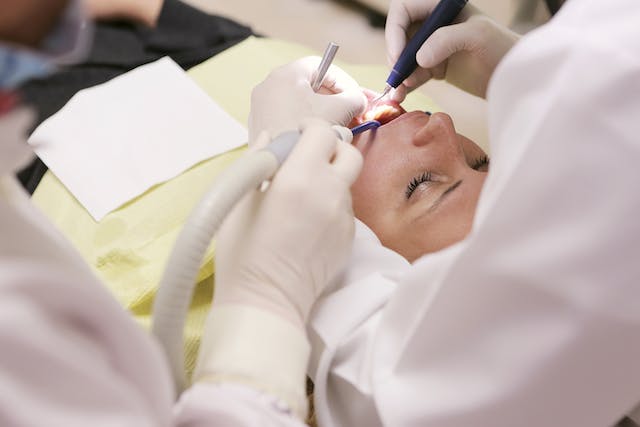Table of Contents
ToggleWisdom teeth, also known as third molars, often become a dental concern due to their potential for impaction. Impacted wisdom teeth occur when these molars don’t fully emerge or erupt through the gums, leading to a range of issues. Understanding the types of impactions is crucial for both proactive dental care and informed decision-making when it comes to wisdom teeth removal in Sydney.
Mesial Impaction: The Common Occurrence
Mesial impaction is the most common type of wisdom tooth impaction. In this scenario, the tooth is angled towards the front of the mouth, pressing against the second molar. This positioning can lead to pain, swelling, and difficulty in cleaning the affected area. Mesial impactions often necessitate removal due to the challenges they pose to oral health.
Distal Impaction: A Different Angle
On the flip side, distal impaction occurs when the wisdom tooth is angled towards the back of the mouth, away from the second molar. While less common than mesial impaction, distal impaction can still cause discomfort and complications. Individuals with distally impacted wisdom teeth may experience pain in the jaw and swelling.
Vertical Impaction: A Straightforward Situation
Vertical impaction is considered the least problematic type of impaction. In this case, the wisdom tooth is angled vertically, attempting to erupt normally. However, even vertical impactions can pose challenges if there isn’t enough space in the jaw for the tooth to emerge fully. Regular monitoring by a dentist is essential to ensure that potential issues are addressed promptly.
Horizontal Impaction: A Sideways Challenge
One of the more complex types of impactions is horizontal impaction, where the wisdom tooth grows sideways, parallel to the jawbone. This orientation can cause severe pain, damage to adjacent teeth, and increases the risk of infection. Horizontal impactions often require surgical extraction due to the intricate positioning of the tooth.
Soft Tissue vs. Bony Impaction: Unveiling the Layers
Wisdom tooth impactions are further categorised into soft tissue and bony impactions. Soft tissue impaction occurs when the tooth is covered by gum tissue, making it challenging to clean and maintain oral hygiene. On the other hand, bony impaction involves a tooth that is partially or fully encased within the jawbone. Both scenarios require careful consideration and may involve different techniques of wisdom teeth removal near me.
Why Wisdom Teeth Removal is Often Necessary:
Regardless of the type of impaction, wisdom teeth removal is frequently recommended. Impacted wisdom teeth can lead to various complications including pain and discomfort, infection, and more.
Understanding the types of wisdom tooth impactions is a crucial step in proactive oral health management. Considering impacted wisdom teeth removal near me ensures a brighter, pain-free future for your smile.

